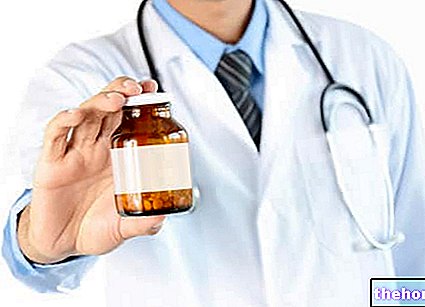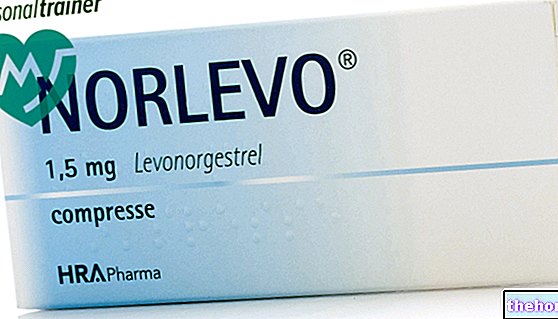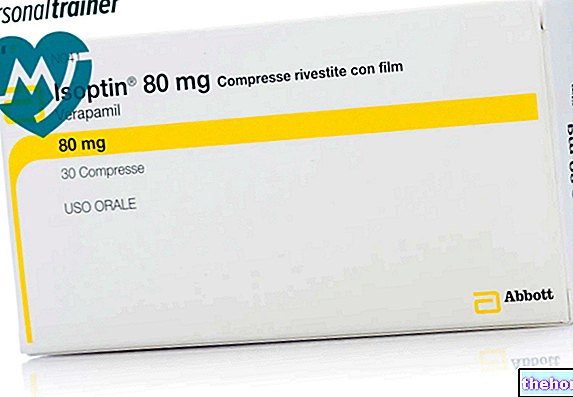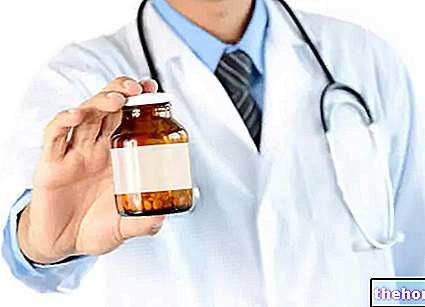Active ingredients: Paracetamol, Ascorbic acid, Phenylephrine
TACHIFLUDEC powder for oral solution with lemon flavor
TACHIFLUDEC powder for oral solution with lemon and honey flavor
Tachifludec package inserts are available for pack sizes: - TACHIFLUDEC powder for oral solution with lemon flavor, TACHIFLUDEC powder for oral solution with lemon and honey flavor
- TACHIFLUDEC Adult powder for oral solution orange flavor
Why is Tachifludec used? What is it for?
Tachifludec is a drug with analgesic, antipyretic and nasal decongestant activity.
Tachifludec is used for the symptomatic treatment of flu, colds and related feverish and painful states, with a decongestant action on the upper upper airways.
Contraindications When Tachifludec should not be used
Hypersensitivity to the active substances or to any of the excipients.
Children under the age of 12.
In patients taking beta-blockers, monoamine oxidase inhibitors and tricyclic antidepressants.
In patients suffering from hepatic or renal insufficiency, diabetes, hyperthyroidism, hypertension and cardiovascular disease.
Paracetamol-based products are contraindicated in patients with manifest insufficiency of glucose-6-phosphate dehydrogenase and in those suffering from severe haemolytic anemia.
Severe hepatocellular insufficiency.
Precautions for use What you need to know before taking Tachifludec
During treatment with paracetamol, before taking any other drug, check that it does not contain the same active ingredient, as if paracetamol is taken in high doses, serious adverse reactions may occur, including severe liver disease and changes in the kidney and blood.
Also, before combining any other medication, contact your doctor (see also "What medicines or foods can change the" effect of the medicine ").
Do not administer for more than 3 consecutive days without consulting your doctor.
The use of the product is not recommended if the patient is being treated with anti-inflammatories.
Interactions Which drugs or foods can modify the effect of Tachifludec
Tell your doctor or pharmacist if you have recently taken any other medicines, even those without a prescription.
The hepatotoxic effect of paracetamol can be enhanced by the intake of other drugs active on the liver.
Patients being treated with rifampicin, cimetidine or antiepileptic drugs such as glutethimide, phenobarbital, carbamazepine, should use paracetamol with extreme caution and only under strict medical supervision.
Paracetamol increases the half-life of chloramphenicol.
Paracetamol taken in high doses can potentiate the effect of coumarin anticoagulants.
Phenylephrine may reduce the efficacy of beta-blocking and antihypertensive drugs and may enhance the action of monoamine oxidase inhibitors.
Warnings It is important to know that:
The administration of paracetamol can interfere with the determination of uric acid (by the method of phosphotungstic acid) and with that of blood glucose (by the method of glucose-oxidase-peroxidase).
When it can be used only after consulting your doctor
During pregnancy and breastfeeding (see "What to do during pregnancy and" breastfeeding ") You should also consult your doctor if these problems have occurred in the past.
What to do during pregnancy and breastfeeding
Ask your doctor or pharmacist for advice before taking any medicine. During pregnancy and breastfeeding Tachifludec should only be used after consulting your doctor and evaluating with him the risk / benefit ratio in your case. Consult your doctor if you suspect a pregnancy or wish to plan a maternity leave.
Driving and using machines
Tachifludec does not affect the ability to drive and use machines.
Important information about some of the ingredients of Tachifludec
Tachifludec contains sucrose: Patients with rare hereditary problems of hereditary fructose intolerance, glucose-galactose malabsorption syndrome or sucrase-isomaltase insufficiency should not take this medicine.
Tachifludec lemon flavor contains 4.9 mmol (112.9 mg) of sodium per sachet; Tachifludec lemon and honey flavor contains 5.9 mmol (135.8 mg) sodium per sachet: to be taken into consideration in people with reduced kidney function or on a low sodium diet.
Dosage and method of use How to use Tachifludec: Dosage
How much Adults and children over 12 years: 1 sachet every 4-6 hours and up to a maximum of 3 sachets in 24 hours.
Children under the age of 12: the drug cannot be taken by children under the age of 12.
Warning: do not exceed the indicated doses without medical advice.
When and for how long
Warning: use only for short periods of treatment. Consult your doctor if the disorder occurs repeatedly or if you have noticed any recent changes in its characteristics.
Like
Dissolve a sachet in a glass of very hot water and, if desired, dilute with cold water to cool and sweeten as desired.
Overdose What to do if you have taken too much Tachifludec
At the recommended doses, or even in the hypothesis in which the entire pack is taken, no symptoms of paracetamol overdose should appear. However, in the case of ingestion of very high doses of paracetamol (greater than 15 g), the most commonly encountered complication is liver damage, which usually occurs 2-4 days after ingestion. Early symptoms are nausea, vomiting and abdominal pain: the appropriate therapy recommended is gastric lavage using specific antidotes such as acetylcysteine or methionine. More than 10 hours after ingestion, a haemoperfusion may be necessary.
Other symptoms of overdose are caused by phenylephrine and are manifested by irritability, headache and increased blood pressure.
In case of accidental ingestion / intake of an overdose of Tachifludec, notify your doctor immediately or go to the nearest hospital.
If you have any questions about the use of Tachifludec, ask your doctor or pharmacist.
Side Effects What are the side effects of Tachifludec
Like all medicines, Tachifludec can cause side effects, although not everybody gets them.
Skin reactions of various types and severities have been reported with the use of paracetamol, including cases of erythema multiforme, Stevens Johnson syndrome and epidermal necrolysis.
Hypersensitivity reactions such as angioedema, larynx edema, anaphylactic shock have been reported. In addition, the following undesirable effects have been reported: thrombocytopenia, leukopenia, anemia, agranulocytosis, liver function abnormalities and hepatitis, kidney disorders (acute renal failure, interstitial nephritis, haematuria, anuria), gastrointestinal reactions and dizziness.
With sympathomimetics (phenylephrine) skin irritation, tachycardia, hypertension and much more rarely nausea, vomiting or anorexia may occur occasionally.
Compliance with the instructions contained in the package leaflet reduces the risk of undesirable effects.
If any of the side effects gets serious or if you notice any side effects not listed in this leaflet, please inform your doctor or pharmacist.
Expiry and Retention
Expiry: see the expiry date printed on the package.
Do not use the medicine after the expiry date indicated on the package.
The expiry date refers to the product in intact packaging, correctly stored.
Store below 25 ° C.
It is important to always have the information on the medicine available, so keep both the box and the package leaflet.
Medicines should not be disposed of via wastewater or household waste. Ask your pharmacist how to dispose of medicines that are no longer used. This will help protect the environment.
Keep this medicine out of the reach and sight of children.
Composition and pharmaceutical form
COMPOSITION
TACHIFLUDEC powder for oral solution with lemon flavor
Each sachet contains: active ingredients: paracetamol 600 mg, ascorbic acid 40 mg, phenylephrine hydrochloride 10 mg (corresponding to phenylephrine 8.2 mg).Excipients: sucrose, anhydrous citric acid, sodium citrate, maize starch, sodium cyclamate, sodium saccharin, anhydrous colloidal silica, lemon flavor, curcumin (E 100).
TACHIFLUDEC powder for oral solution with lemon and honey flavor
Each sachet contains: active ingredients: paracetamol 600 mg, ascorbic acid 40 mg, phenylephrine hydrochloride 10 mg (corresponding to phenylephrine 8.2 mg). Excipients: sucrose, anhydrous citric acid, sodium citrate, corn starch, sodium cyclamate, sodium saccharin, lemon flavoring, honey flavoring, caramel (E 150), anhydrous colloidal silica.
HOW IT LOOKS
Tachifludec is presented as a powder for oral solution. Each pack contains 10 sachets.
Source Package Leaflet: AIFA (Italian Medicines Agency). Content published in January 2016. The information present may not be up-to-date.
To have access to the most up-to-date version, it is advisable to access the AIFA (Italian Medicines Agency) website. Disclaimer and useful information.
01.0 NAME OF THE MEDICINAL PRODUCT
TACHIFLUDEC
02.0 QUALITATIVE AND QUANTITATIVE COMPOSITION
One TACHIFLUDEC 6 g sachet of powder for oral solution contains:
Paracetamol 600 mg
Ascorbic acid 40 mg
Phenylephrine hydrochloride 10 mg
03.0 PHARMACEUTICAL FORM
Powder for oral solution.
04.0 CLINICAL INFORMATION
04.1 Therapeutic indications
Symptomatic treatment of flu, colds and related feverish and painful states, with a decongestant action on the upper upper airways.
04.2 Posology and method of administration
Adults and children over 12 years old: 1 sachet every 4-6 hours and up to a maximum of 3 sachets in 24 hours. Dissolve 1 sachet in half a glass of very hot water and, if desired, dilute with cold water to cool and sweeten as desired.
The product should not be administered to children under the age of 12 unless under medical supervision.
04.3 Contraindications
Hypersensitivity to components or other closely related substances from a chemical point of view.
Patients taking beta-blockers, monoamine oxidase inhibitors and tricyclic antidepressants.
Patients suffering from hepatic or renal insufficiency, diabetes, hyperthyroidism, hypertension and cardiovascular diseases.
Paracetamol-based products are contraindicated in patients with manifest insufficiency of glucose-6-phosphate dehydrogenase and in those suffering from severe haemolytic anemia.
Severe hepatocellular insufficiency.
04.4 Special warnings and appropriate precautions for use
During treatment with paracetamol, before taking any other drug check that it does not contain the same active ingredient, as if paracetamol is taken in high doses, serious adverse reactions can occur.
Instruct the patient to contact the physician before associating any other medication. See also under "Interactions with other medicinal products and other forms of interaction".
The use of the product is not recommended if the patient is being treated with anti-inflammatories.
Due to the presence of sodium, the product should be used with caution in patients on a low sodium diet.
Due to the presence of sucrose (3725 mg per sachet in TACHIFLUDEC lemon flavor pack and 3802 mg per sachet in TACHIFLUDEC lemon honey flavor pack), the product should be used with caution in patients with hereditary fructose intolerance, glucose-galactose malabsorption syndrome or in case of sucrase-isomaltase deficiency.
Keep this medicine out of the reach of children.
04.5 Interactions with other medicinal products and other forms of interaction
The hepatotoxic effect of paracetamol can be enhanced by the intake of other drugs active on the liver.
Use with extreme caution and under strict control during chronic treatment with drugs that can determine the induction of hepatic monooxygenases or in case of exposure to substances that can have this effect (for example rifampicin, cimetidine, antiepileptics such as glutethimide, phenobarbital, carbamazepine) .
The administration of paracetamol can interfere with the determination of uric acid (by the method of phosphotungstic acid) and with that of blood glucose (by the method of glucose-oxidase-peroxidase).
Paracetamol increases the half-life of chloramphenicol.
The product taken in high doses can enhance the effect of coumarin anticoagulants.
Phenylephrine can antagonize the effect of beta-blocking and antihypertensive drugs and can enhance the action of monoamine oxidase inhibitors.
04.6 Pregnancy and lactation
The use during pregnancy is not contraindicated but requires caution; the administration of the preparation during pregnancy and lactation must take place under the direct supervision of the doctor and in case of real need.
04.7 Effects on ability to drive and use machines
The product does not affect the ability to drive and use machines.
04.8 Undesirable effects
Skin reactions of various types and severities have been reported with the use of paracetamol, including cases of erythema multiforme, Stevens Johnson syndrome and epidermal necrolysis.
Hypersensitivity reactions such as angioedema, larynx edema, anaphylactic shock have been reported. In addition, the following undesirable effects have been reported: thrombocytopenia, leukopenia, anemia, agranulocytosis, liver function abnormalities and hepatitis, kidney disorders (acute renal failure, interstitial nephritis, haematuria, anuria), gastrointestinal reactions and dizziness.
With sympathomimetics (phenylephrine) skin irritation, tachycardia, hypertension and much more rarely nausea, vomiting or anorexia may occur occasionally.
04.9 Overdose
At the recommended doses, or even in the hypothesis in which the entire pack is taken, no symptoms of paracetamol overdose should appear. However, in the case of ingestion of very high doses of paracetamol (greater than 15 g), the most commonly encountered complication is liver damage, which usually occurs 2-4 days after ingestion. Early symptoms are nausea, vomiting and abdominal pain: the appropriate therapy recommended is gastric lavage using specific antidotes such as acetylcysteine or methionine. More than 10 hours after ingestion, a haemoperfusion may be necessary.
Other symptoms of overdose are caused by phenylephrine and are manifested by irritability, headache and increased blood pressure.
05.0 PHARMACOLOGICAL PROPERTIES
05.1 Pharmacodynamic properties
TACHIFLUDEC powder for oral solution contains paracetamol, vitamin C and phenylephrine hydrochloride and is indicated for the symptomatic treatment of flu and colds.
Paracetamol is a substance with analgesic and antipyretic properties ascribable to the inhibition of the cyclooxygenase of arachidonic acid with consequent inhibition of the biosynthesis of prostaglandins and thromboxanes responsible for the onset of the symptoms of inflammation, pain and fever present in the common cold.
Vitamin C exerts a protective effect on the vascular system and activates the body's defensive and immune powers. It is often introduced into cold combinations to compensate for the loss of vitamin C that occurs in the early stages of an acute viral infection including the common cold.
Phenylephrine hydrochloride is an aminosympathomimetic which is absorbed in the gastrointestinal tract and reaches the nasal mucosa. Phenylephrine hydrochloride induces vasoconstriction of congested microvessels of the nasal mucosa and consequently reduces secretion and promotes clearing of the airways.
05.2 Pharmacokinetic properties
Paracetamol is readily absorbed in the gastrointestinal tract and is distributed almost uniformly in most body fluids, is metabolized in the liver and excreted in the urine mainly in conjugated form as glucuronate and sulfate.
Vitamin C is a water-soluble vitamin; it is absorbed in the gastrointestinal tract and is widely distributed in the various tissues. 25% of the absorbed vitamin C binds to plasma proteins. The amount in excess of the body's needs is metabolized and excreted in the urine.
Phenylephrine hydrochloride is an aminosympathomimetic which is absorbed in the gastrointestinal tract and reaches the nasal mucosa. The absorbed phenylephrine is partially metabolized by intestinal and hepatic monooxidases and is completely eliminated in the urine as sulphate.
05.3 Preclinical safety data
Paracetamol:
Acute and chronic toxicity studies did not reveal any adverse effects. The LD50 for paracetamol administered orally varies from 850 to over 3000 mg / kg depending on the animal species used.
The hepatic toxicity of paracetamol in humans in case of overdose (10 g) is due to the formation, through the intervention of cytochrome P 450, of a small quantity (4%) of a reactive intermediate metabolite, which, in the absence of a adequate reserve of glutathione, it binds covalently to cellular macromolecules.
Ascorbic acid:
Its acute toxicity is practically nil.
Phenylephrine hydrochloride:
It has a LD50 equal to 350 mg / kg per os in rats, a dose significantly higher than that used in the clinic.
06.0 PHARMACEUTICAL INFORMATION
06.1 Excipients
TACHIFLUDEC powder for oral solution (lemon flavor package): sucrose, citric acid, sodium citrate, corn starch, sodium cyclamate, sodium saccharin, colloidal silica, lemon flavor, curcumin (E 100).
TACHIFLUDEC powder for oral solution (honey lemon flavor package): sucrose, citric acid, sodium citrate, corn starch, sodium cyclamate, sodium saccharin, lemon flavor, honey flavor, caramel (E 150).
06.2 Incompatibility
None known.
06.3 Period of validity
When the packaging is properly stored, the product is valid for 36 months.
06.4 Special precautions for storage
Store at a temperature not exceeding 25 ° C.
06.5 Nature of the immediate packaging and contents of the package
10 sachets in coupled paper / aluminum / polythene, containing 6 g of powder, contained in a lithographed cardboard box.
06.6 Instructions for use and handling
See point 4.2
07.0 MARKETING AUTHORIZATION HOLDER
Joint Chemical Companies Angelini Francesco - A.C.R.A.F. S.p.A.
Viale Amelia, 70 - 00181 Rome.
08.0 MARKETING AUTHORIZATION NUMBER
TACHIFLUDEC powder for oral solution (lemon flavor pack):
AIC n. 034358010
TACHIFLUDEC powder for oral solution (honey lemon flavor pack):
AIC n. 034358022
09.0 DATE OF FIRST AUTHORIZATION OR RENEWAL OF THE AUTHORIZATION
Date of first AIC: 28.01.2000 / Date of AIC renewal: 28.01.2005
10.0 DATE OF REVISION OF THE TEXT
22/05/2007




























